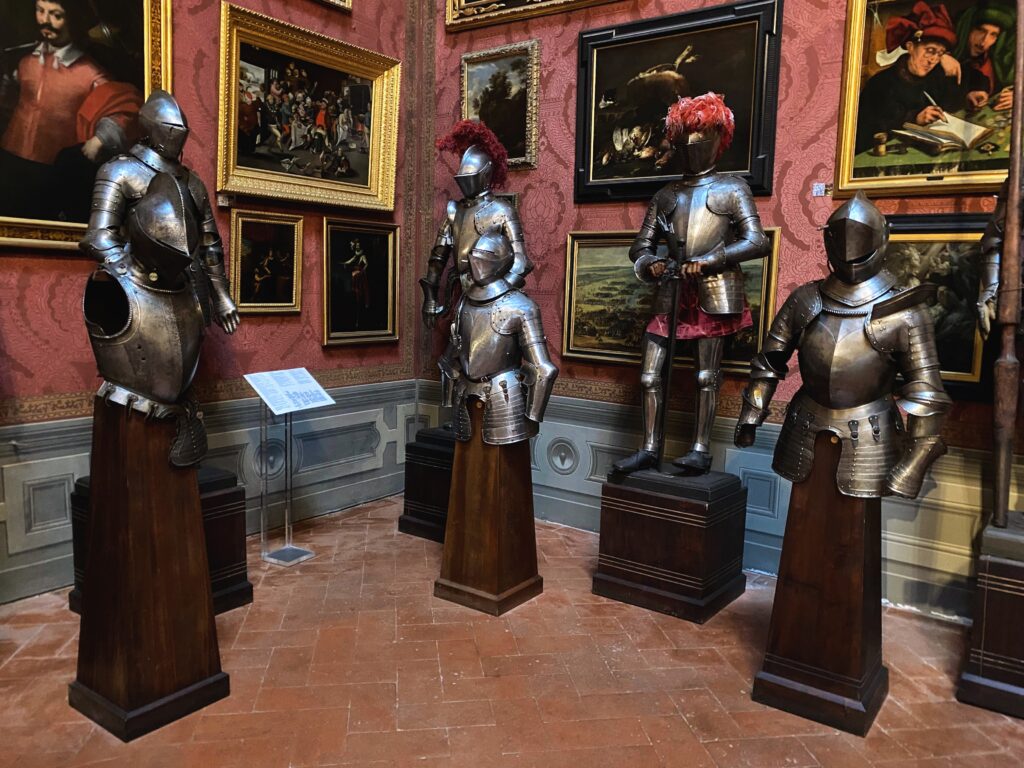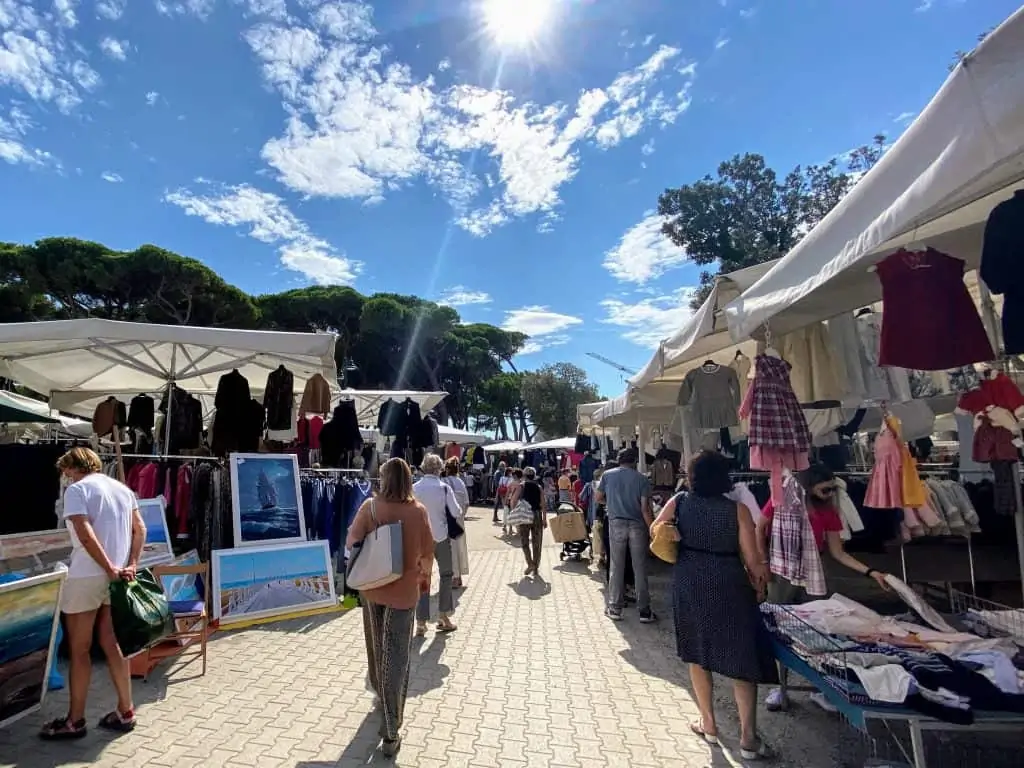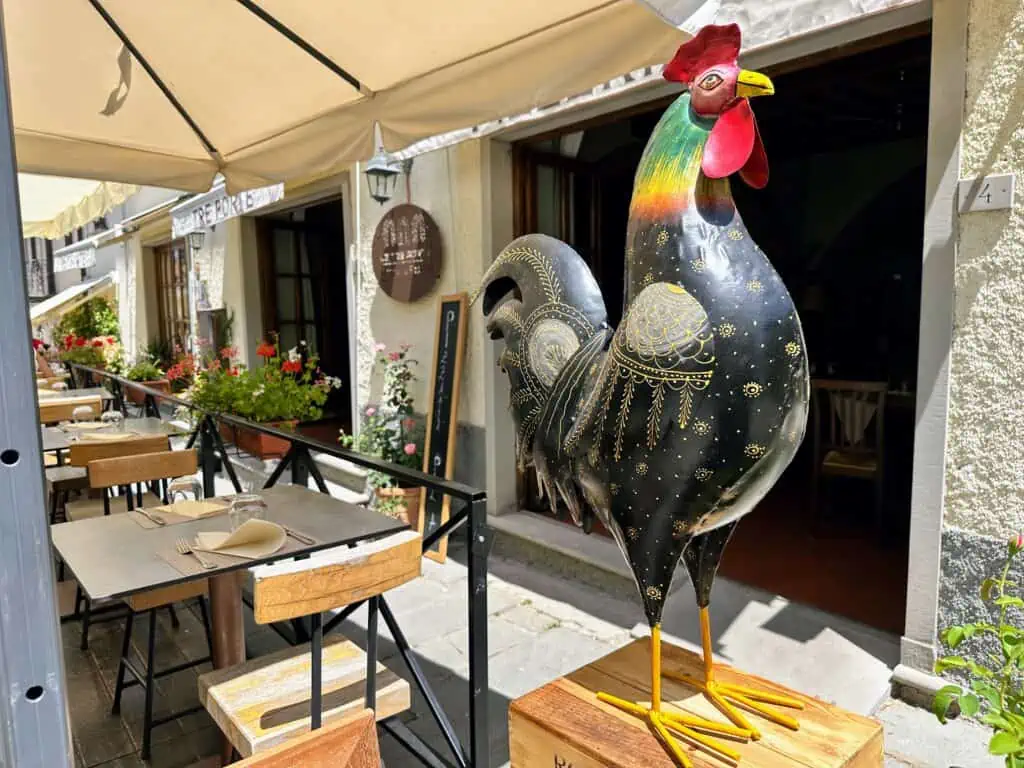Have you ever collected anything? Beanie babies, stamps, thimbles (me), shot glasses, Pokemon cards?
Frederick Stibbert, a longtime Florence resident born to an English father and Italian mother, had a thing for armor. He took the meaning of collecting to a whole new level – so much so that his collection of armor, costumes, weapons, paintings, and more outgrew his villa in Florence. He had to hire an architect to add more rooms!
Stibbert kindly donated his Villa Montughi and collection of around 50,000 artifacts to Florence, and in 1909 (three years after his death), the museum opened to curious and passionate visitors. It’s been wowing them ever since.
I can’t believe this museum doesn’t get more attention – it’s truly an amazing collection, and it’s displayed so well in the villa.
Table of Contents
Visiting the Stibbert Museum – How to Get There
I think part of the reason the museum isn’t as popular as some of the other Florence museums is that it’s not in the center. You can’t leave your hotel and arrive five minutes later on foot.
The Stibbert museum is located about 2.5 kilometers from the Duomo, which means you need to walk (30 minutes), take the bus (20-30 minutes), take the T1 tram (20-30 minutes), or take a taxi (15 minutes). Note that all of the public transport involves at least a 5-10 minute walk. You can drive and park near the museum if you’re arriving from outside the city.
Google Maps works well to help you find the best public transport option depending on where you are in the city.
Inside the Stibbert Museum
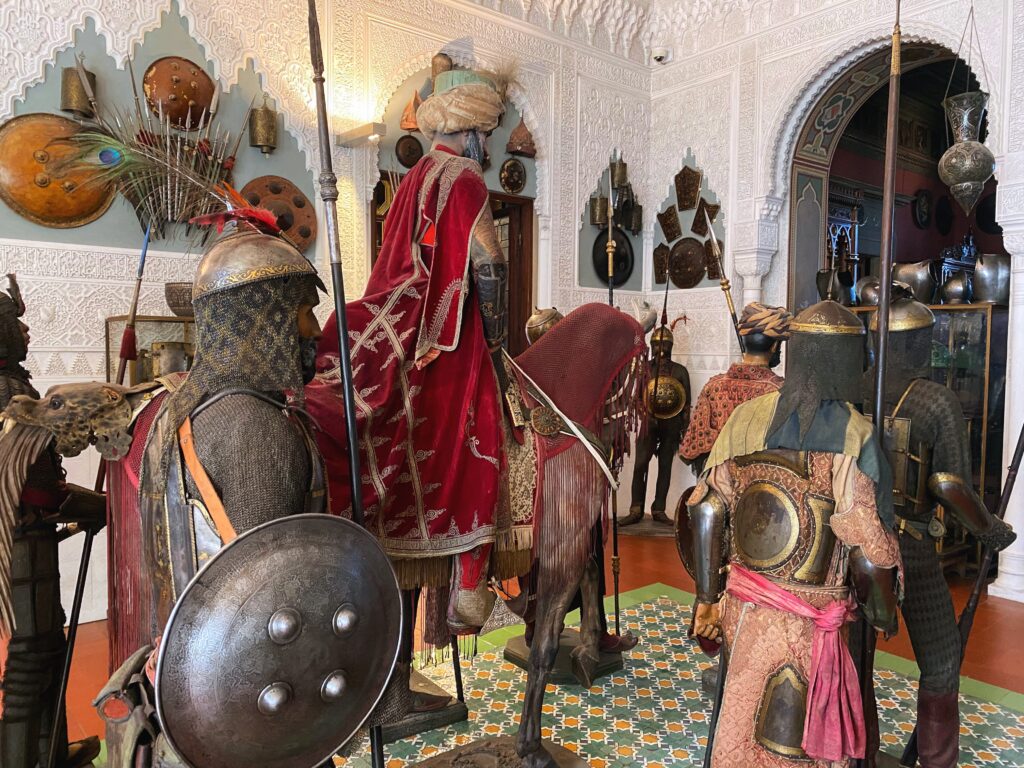
Good To Know: While you can show up unannounced (without a reservation), the entrance numbers are limited and timed. So, if you arrive and that hour’s visit is already full, you’ll need to wait. I recommend calling or emailing ahead.
The visit to the museum takes between 75 and 90 minutes.
You’ll visit the museum with an employee. It’s not a guided visit, but the staff member will explain a little bit about what you’re seeing and show you things you may not have noticed on your own. We found Giulia (who accompanied us on our visit) to be well-informed and full of fun facts and info for children and adults.
If you want more information, there are QR codes displayed with artifacts throughout the museum. Simply scan the code, and you’ll see a detailed explanation in Italian and English. I scanned a few of them and found the info helpful and interesting. Here’s an example of one so you can see it’s not a bunch of gibberish (often the case of English info panels in Italian museums).
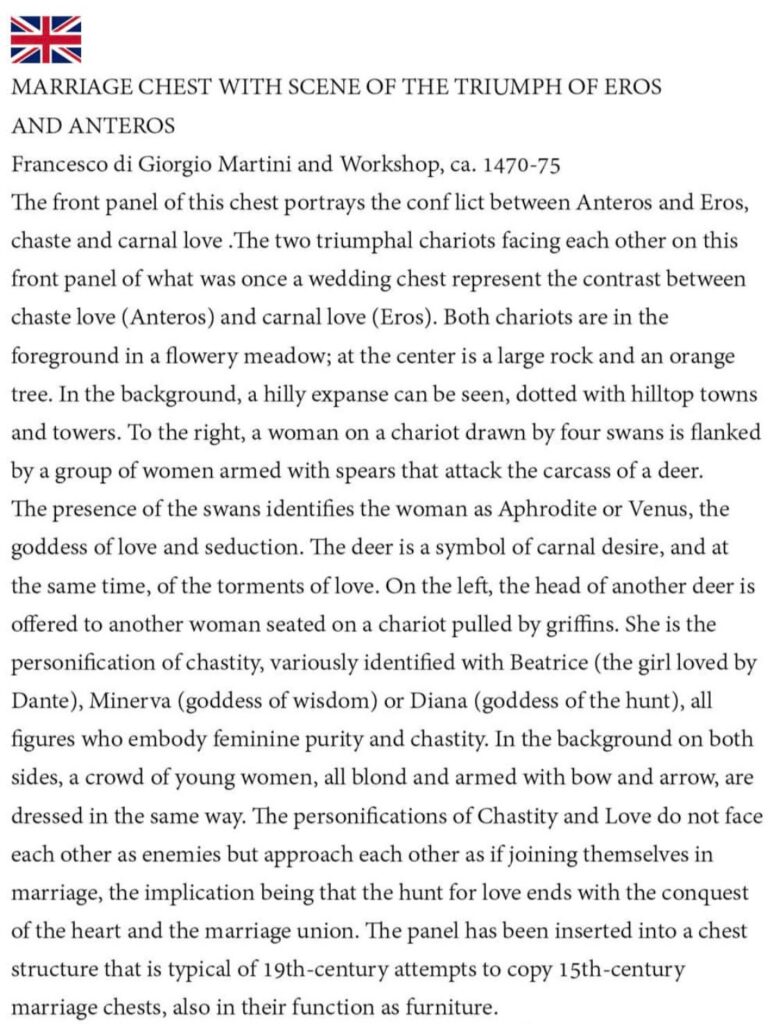
Good To Know: You can have a guided visit to the museum, but you need to arrange it in advance. The cost is currently 150€.
You’ll probably go to the Stibbert Museum for its armor collection – that’s why most visitors do. The main collections are the European Armory, the Islamic Armory, and the Japanese Armory, plus Stibbert’s collections of costumes, paintings, and ceramics. I can pretty much guarantee you’ll be awed by the building itself, the variety of armor, and his other collections (I bet you didn’t think you’d find Napolean’s clothes here, did you?).
Some of our favorite things to look at in the museum, that we recommend keeping a lookout for:
- Islamic armor and weapons and the decoration of the room
- Indian bridal wear
- Japanese armor and the symbols on the masks
- Japanese theater masks
- Traditional Chinese bride
- The secret passage
- Sarcophagus
- The Roman battle helmet
- The great hall with the soldiers on horseback
- St. George and the dragon
- Frederick’s bedroom and bathroom
- Game room and the Siena Palio ‘tent’
- Functioning piano
- War drums
- The 20 kg gun (took 2 men to use it)
- Napolean’s clothing, other shoes, and costumes
- The decorations on the outside of the building (facing the garden)
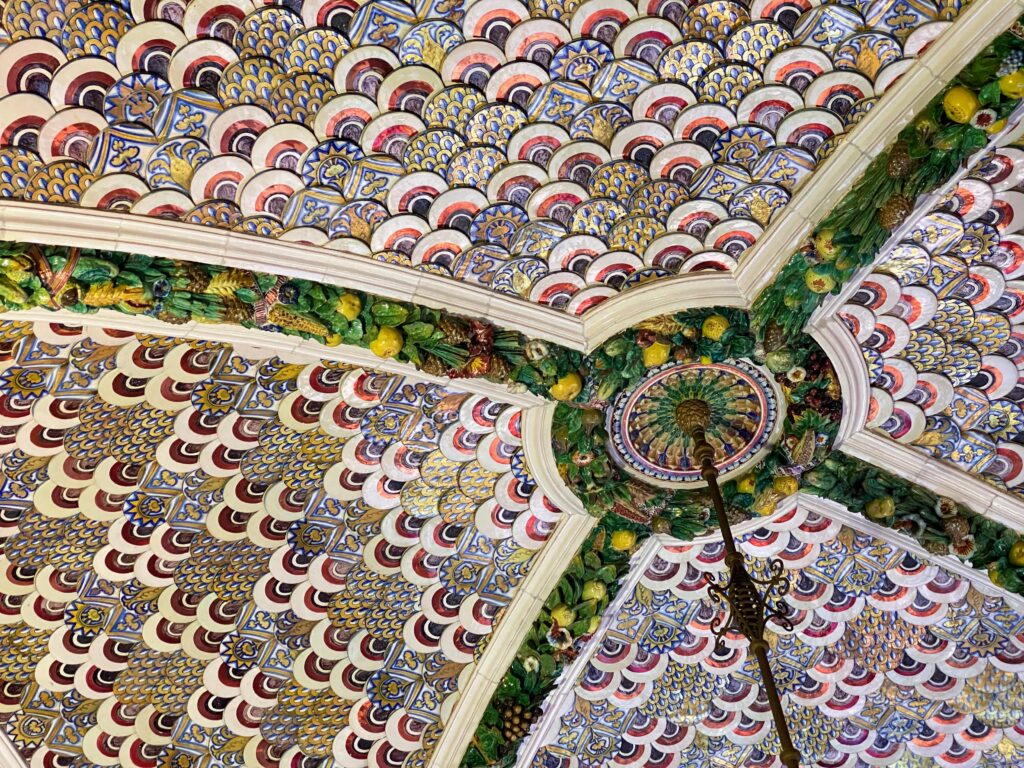
After Visiting the Stibbert Museum
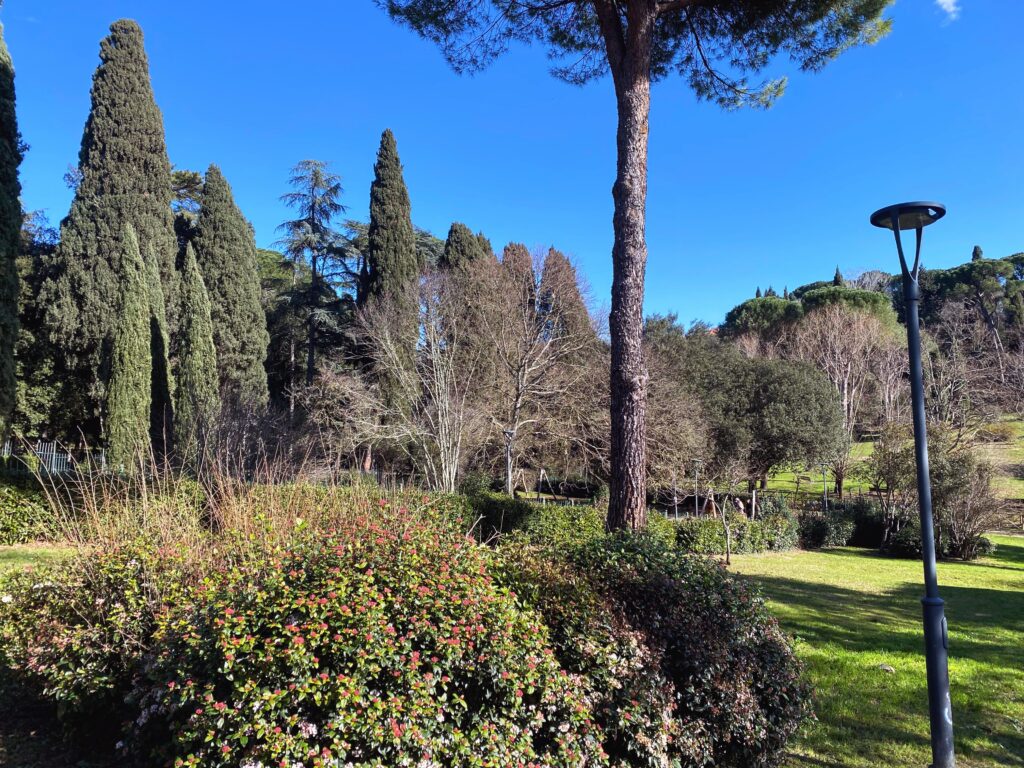
Before you exit the museum, you’ll walk through a small bookshop / giftshop. It’s got a nice collection of knights and armor souvenirs (like helmets, books, swords, and princess hats), and there are a few nice books on the museum’s collection in English.
If it’s a nice day, you’ll want to stick around and explore the Stibbert Museum’s Garden, or the adjacent Baden Powell Garden. The Stibbert Garden is particularly nice on a hot Tuscan day, because there’s a lot of shade and you can look for the Egyptian temple (and kids will love the ducks in the pond). It’s a beautiful spot too – we’ve taken family photos here.
Relax in the park, have a merenda (snack) at the bar attached to the museum or the small café in the nearby Villa Fabricotti Garden, or make your way back to the center (gelato, anyone?). If you’re walking, go a little out of your way to the Giardino dell’Orticoltura (Horticulture Garden) for its views of the center of Florence and for its serpent/dragon statue.
The Baden Powell Garden and Horticulture Garden are two of our favorite Gardens in Florence.
If you enjoyed seeing the armor at the Stibbert Museum, you may want to check out the armor in the Bargello Museum in the historic center.
You may want to check out our favorite Rainy Day Activities in Florence with Kids
Stibbert Museum Logistics
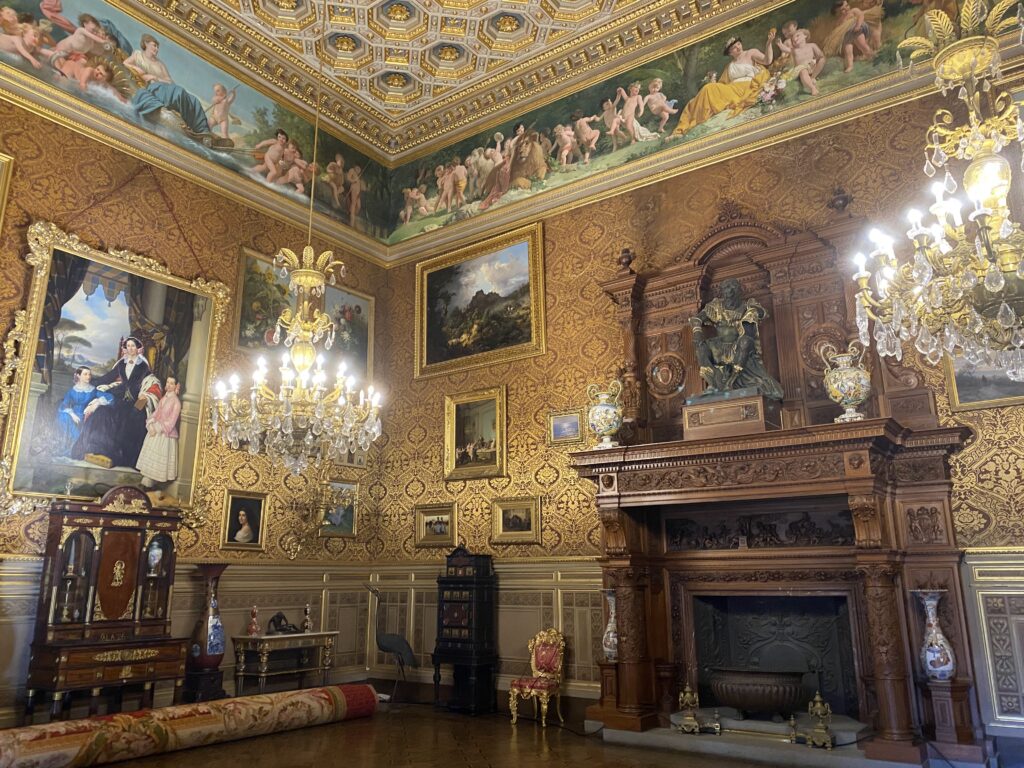
Museo Stibbert
Via Federigo Stibbert, 26
50134 Florence
+39 055.486049
See the official website for up-to-date opening hours and ticket info.
Toilets – At the end of the visit, after the book shop and before the bar.
Food – Bar at the end of the visit has coffee and snacks, indoor and outdoor seating.
Visiting the Stibbert Museum with Kids
- Strollers – The museum allows strollers, but it’s not an ideal place to use one. There are a few sets of stairs so you’ll need to carry your stroller up and down, and you can’t bring a stroller up the spiral steps to the Japanese room. If you have a baby, bring a carrier.
- Diaper changes – There aren’t changing tables in the bathrooms, but you can use a portable changing mat or change your baby on a bench in the park outside.
- Food – There’s a small bar/café as you leave the building. You can also bring your own food and have a picnic at the park next to the museum. There are plenty of benches, picnic tables, and grassy areas.
- Playground – If you’re visiting the Stibbert Museum with little ones, don’t skip the Baden Powell Playground, adjacent to the Stibbert Museum Garden. Although they ‘touch’ each other, you need to walk back out to the road/sidewalk and enter the playground area from the street. It’s small, but fenced, and great for small children. Older children and teens can run around the green areas and try out the fitness equipment.
- Water – You can purchase water in the bar at the museum exit or use the drinking fountain at the playground entrance.
Stibbert Museum FAQ
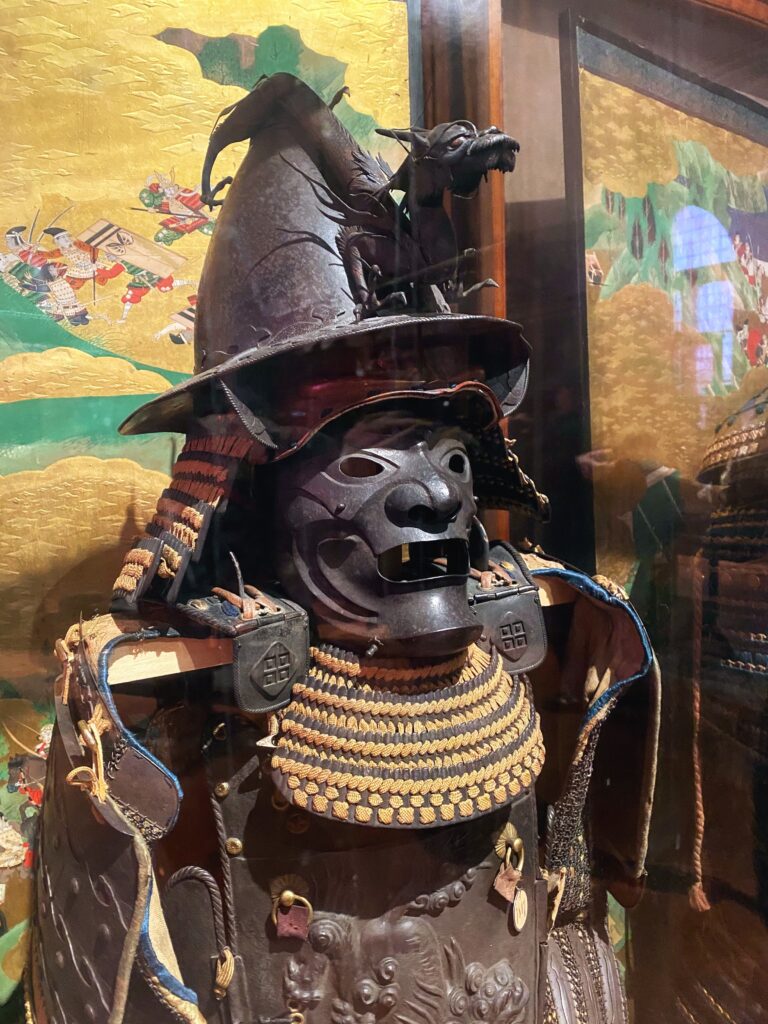
The Stibbert Museum contains an extensive collection of armor – including a European collection, a Japanese collection, and an Islamic collection.
